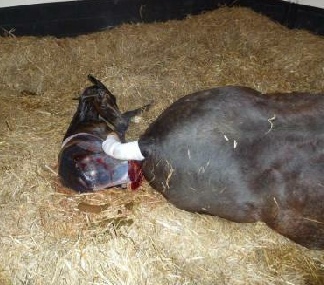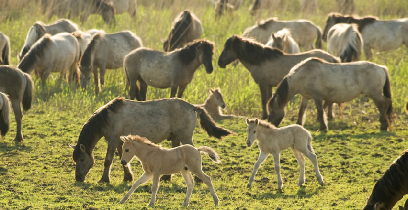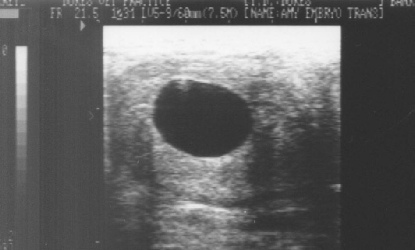
0345 095 9995 Out of hours call 07966 367746
© Dukes Vet Practice 2013, 2014, 2015

Dukes Equine Vets Ltd
Breeding
Many people dream of breeding a champi on horse from their own mare or stallion. There are many ways of breeding from turning a group of mares out with a stallion and allowing nature to take its course to embryo transfer where every stage of the process is carefully controlled.
on horse from their own mare or stallion. There are many ways of breeding from turning a group of mares out with a stallion and allowing nature to take its course to embryo transfer where every stage of the process is carefully controlled.
We have a specialist breeding department for Artificial Insemination, Embryo transfer and semen collection, preparation, chilling and freezing. Select an option on the right for more information. We also stand two stallions at the practice.
Deciding what is the best course of action for you and your mare or stallion can be a bewildering and difficult decision. Here is an overview of the options with some of the pros and cons of each:
Turning mare and stallion out together
In hand natural covering
Artificial insemination (AI) with fresh, chilled or frozen semen
Embryo transfer
 Turning mare and stallion out together
Turning mare and stallion out together
This is usually the cheapest method and many horses are bred this way each year. You do not need trained personnel available and there is no need to monitor mares to see when they are in season (oestrus). The problems are that the stallion choice may be fairly restricted and there are injury risks for both mares and stallions. However with the right stallion and a settled group of mares this can work well. Putting a new mare into an established group during the season can be risky for the mare. Some mares may also be injured by the stallion at mating and there is a higher risk of injury for foals at foot.
It may be difficult to know when certain mares are covered and so foaling dates may be more of an estimate. Management of twin pregnancies is also much more difficult and so this system is often better suited to hardier native pony breeds where twinning is uncommon.
As with all systems pregnancy rates can be good with fertile mares and stallions, however there is little opportunity to manage or help if fertility problems occur.
In hand natural covering
This is the next step up. The mare is monitored to see when she is in oestrus usually by teasing with the stallion and then when the stud manager thinks the mare is ready to be mated she is presented to the stallion for covering. There are various methods for protecting the mare and stallion including hobbles and covering boots for the mare. The mare is sometimes restrained with a twitch but usually she either will mate or she won’t and if she’s not ready no amount of physical or chemical restraint is likely to improve the outcome!
This is more labour intensive and there are risks for the handlers as well as the mare and stallion, but in a well-run unit these can be minimised. You do need skilled staff available but you do get definite covering dates and it is also possible to start to manage fertility problems. However since the mares are not usually routinely scanned the actual timing of ovulation is not usually known so treatments to improve conception rates are limited. As with the first system there is no barrier to sexually transmitted diseases unless all mares and stallions are screened properly first.
There is no need to scan mares pre or post breeding but for example in thoroughbred racehorse breeding, where natural covering is the only legal method, the vast majority of mares will be regularly scanned and intensively managed to maximise success rates and minimise the workload for the stallions.
Artificial insemination (AI) with fresh semen
The mare is no longer covered by the stallion. Instead the stallion’s semen is collected first usually by getting the stallion to mount a “phantom” mare and then collecting his semen into a special container. Once collected the semen is then inseminated into the uterus of a mare in oestrus using a catheter and a syringe.

Since the stallion is no longer mounting a mare he cannot get kicked and the mare cannot be injured by the stallion. If done correctly this is much safer for the mare, stallion and handlers but there is still some risk associated with all breeding activities.
The mare and stallion need to be in close proximity as the semen once collected needs to be inseminated within an hour of collection. Results will often be improved if the semen is processed and or mixed with various extenders after collection prior to insemination. This requires a suitable laboratory or work area and the skills and knowledge to undertake.
Although AI can be done like natural service just by teasing the mares improved accuracy of insemination timing can be achieved by close monitoring of the oestrus cycle by experienced personnel using ultrasound.
Artificial insemination (AI) with chilled semen
Chilled semen is semen that has usually been collected at a remote site and then sent by post or courier to the stud where the mare is. This means the mare and stallion can be hundreds of miles apart and we inseminate mares every year with chilled semen from Germany and occasionally other countries in Europe as well as from all over the UK.
This opens up the use of hundreds of different stallions and with outstanding performance records or bloodlines not always available locally. This is a mixed blessing because not all of the top competition horses have particularly easy temperaments and people may end up with expensively bred horses that they cannot ride! For some mares a well mannered local stallion with good conformation and a good mover may actually be more suitable and better value for money. However if you are breeding for a specific purpose it really does allow access to some of the best stallions in the world.
In general terms chilled semen usually has to be inseminated into the mare within 24 hours of collection and the mare should ovulate within a small time window from not more than a few hours before insemination to about 12 hours after insemination. In order to achieve this the mares are usually scanned very regularly and semen is ordered from the stallion the day before the mare is expected to ovulate. The mare is usually given drugs to control the timing of ovulation. Due to weekends and bank holidays there are limited days when chilled semen can be used so there is a lot of skill in managing the mares to get them to ovulate at the right time as often as possible.
As the semen has to live for a long time outside the mare it needs to be of good quality. This is affected by a number of factors including the stallion, the way the semen is collected and processed, the way it is packaged and sent and how it is inseminated. This means that all parties in the chain have a major role to play in a successful outcome. It is very important to choose a stallion with good fertility and confirm this with the stud, and also to choose a practice skilled and experienced in AI to maximise the chances of a successful outcome.
You should also be aware that as chilled semen is a “fresh” product various things can go wrong. We have had stallions that couldn’t be collected from because they had hurt their back or had been covering mares and would not jump the dummy. We have also had shipments sent with no or very few live semen and we always check chilled semen prior to insemination. We have also been let down by courier companies at least once every year and would recommend that you always ensure the package is ensured for consequential loss should it not arrive on time; with the royal mail at the moment this is only about £1 extra per shipment.
However despite the pitfalls good chilled semen is very successful and we achieve pregnancy rates of about 60% per insemination overall in most years.
Artificial insemination (AI) with frozen semen
Frozen semen is stored in liquid nitrogen at -196oc. For more information on semen freezing see that section of the website. The major advantage of frozen semen is that once frozen if properly kept it is thought to last indefinitely and we successfully use semen from deceased stallions usually at least once every year. This gives access to even more stallions than chilled semen but not all stallions’ semen freezes successfully and freezing semen costs money, so not all stallions are available. However so long as when collected the stallion met the appropriate health requirements semen can be shipped all over the world!
The other big benefit is that the semen can be ordered well in advance of when you need to use it and so is available when required, even if this is 10pm on a Sunday night during a bank holiday weekend!
Frozen semen is not generally considered as robust as chilled or fresh semen so timing of insemination needs to be even more precise. We generally try and inseminate in a time window from three or four hours after ovulation to six hours pre ovulation. In general terms better results are obtained inseminating pre ovulation but not all mares ovulate when you expect them to, particularly if the weather is cold and wet which brings its own challenges!
As with chilled insemination because the mares are more intensively managed this does allow other intensive fertility management techniques to improve conception rates. Again mare, stallion and operators have a big influence on the eventual successful outcome but in general our results are comparable to chilled semen with seasonal pregnancy rates of about 60% per insemination.
Embryo transfer
This is a service we offer that can be used with any of the above insemination methods. However the mares need to be regularly monitored as we need to know the time of ovulation to within at least 24 hours.
Embryo transfer is taking a successfully fertilised embryo from one donor mare and putting it in another recipient mare roughly a week post insemination. The recipient mare then hopefully carries the foal to term and rears the foal, allowing the donor mare to produce several foals in a year whilst still being ridden or competed herself.
One mare has been inseminated three times using three different stallions. From the three inseminations we recovered five embryos and achieved five pregnancies. Three of the foals were born last year and are now in Germany and the owner is expecting two more foals this year!
Embryo transfer can also be done with fresh, chilled or frozen embryos. So far we have only carried out fresh transfers here but pregnancy rates for overnight cooled shipped embryo are very comparable to fresh transfer, with the best centres achieving about 85% post transfer pregnancy rates with both. We have achieved 9 pregnancies form the last 10 embryos we have transferred to July 2012.
Freezing equine embryos is still very much in its infancy and success rates are very variable and poor at the moment compared to fresh transfers. We are not proposing to freeze embryos commercially at the moment but we may try some later this year if we have surplus embryos from our own mares.




